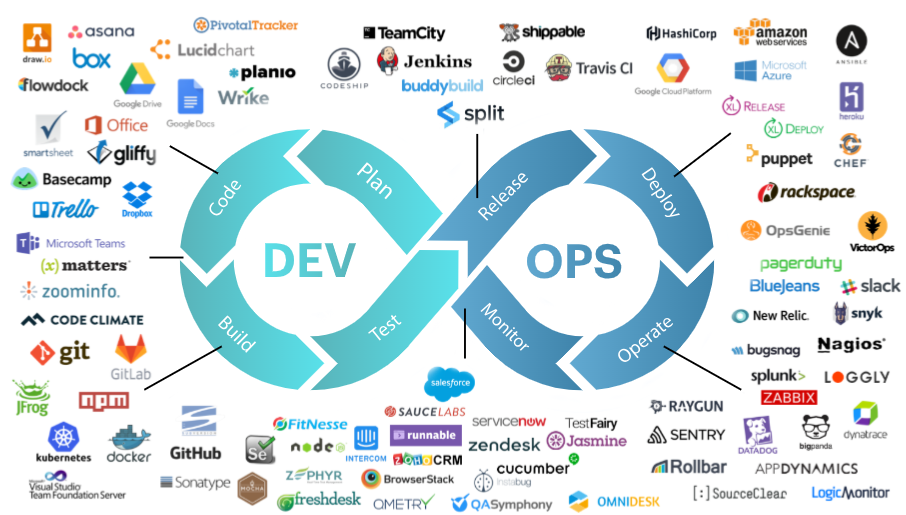My DevOps tooling basics set for Unix(Ubuntu/Debian/Linux)

These are my categorized to cover system management, networking, package management, file handling and more for DevOps tooling
First step Install Midnight Commander:
1.sudo apt install mc
2. mc
System & Process Management
1.Show system info
uname -a
2. Show disk usage
df -h
3.Show memory and swap usage
free -h
4.Real-time resource usage
htop
5.Show running processes
ps aux, ps -a (see all PID)
6.Kill a process by PID
kill -9 <PID>
7. Reboot / shutdown system
sudo reboot (user need to be in sudo group)
File & Directory Commands
1.List files
ls -lah
2.Change directory
cd /path/to/dir
3.Create directory
mkdir -p /path/to/dir
4.Copy files/directories
cp file1.txt /dest/
cp -r dir1 /dest/
5. Create empty file “0Kb”
cp file1.txt > file1.txt
6. Move/rename
mv file1.txt /dest/
mv file1.txt file2.txt
7. Delete
rm file.txt
rm -rf dir/
8.Search files
find . -name “*.log”
grep “error” logfile.log
9. Create new file
a ) cat > myfile.txt (after that Type your content, then press Ctrl+D to save and exit.)
b) nano myfile.txt (after that Type your content, then press Ctrl+X to save and exit.)
c) mc (Midnight Commander)
Navigate to the directory where you want to create the file using the arrow keys or Tab to switch panels.
Open the Command Menu:
Press F9 to open the top menu bar.
Select “File” Menu:
Use the left/right arrow keys to highlight File, then press Enter.
Choose “New…”:
Select New (sometimes listed as New File or just New) and press Enter.
Enter the File Name:
You’ll be prompted to type the name of the new file (e.g., newfile.txt). Type it and press Enter.
Edit the File (Optional):
After creating, you can press F4 to open it in the internal editor.
User & Permission Management
1. Switch user
su – username
2. Run command as root
sudo (command)
3. Change directory and file permissions
chmod 755 dir
chmod 644 file.txt
4. Change file ownership
chown user:group file.txt
5. Add a user and change password
sudo adduser username
sudo passwd username
6. Add user to group (e.g., docker group)
sudo usermod -aG docker username
Networking
1.Show IP address
ip a
2.Show routing table
ip r
3. Test connectivity
ping google.com
4. DNS lookup
nslookup google.com
5. Show open ports and services
ss -tuln
netstat -tuln # If installed
6. Test port connection
telnet host port
nc -zv host port
Package Management (APT)
1.Update repo list
sudo apt update
2. Upgrade packages
sudo apt upgrade -y
3. Install a package
sudo apt install nginx
4.Remove a package
sudo apt remove nginx
directory
apt search package-name
Docker Basics
1. Install required dependencies:
sudo apt install apt-transport-https ca-certificates curl software-properties-common -y
2. Add Docker’s official GPG key:
curl -fsSL https://download.docker.com/linux/ubuntu/gpg | sudo gpg –dearmor -o /usr/share/keyrings/docker-archive-keyring.gpg
3.Add Docker’s repository:
echo \ “deb [arch=$(dpkg –print-architecture) signed-by=/usr/share/keyrings/docker-archive-keyring.gpg] \ https://download.docker.com/linux/ubuntu \
$(lsb_release -cs) stable” | \ sudo tee /etc/apt/sources.list.d/docker.list > /dev/null
4. Update again and install Docker:
sudo apt update
sudo apt install docker-ce docker-ce-cli containerd.io -y
5. Check Docker version
docker –version
6. List images
docker images
7.List running containers
docker ps
8. Start/stop containers
docker start <container>
docker stop <container>
9. Run container
docker run -d -p 8080:80 nginx
10. Build image
docker build -t myimage .
11. Remove unused resources
docker system prune
Systemctl / Service Management
1.Start/stop/restart a service
sudo systemctl start nginx
sudo systemctl stop nginx
sudo systemctl restart nginx
2.Enable/disable on boot
sudo systemctl enable nginx
sudo systemctl disable nginx
3.Check service status
sudo systemctl status nginx
Log Management
1. View logs
tail -f /var/log/syslog
tail -f /var/log/nginx/error.log
2. Journalctl (systemd logs)
journalctl -xe
journalctl -u nginx
Others
1.Download files
curl -O http://example.com/file
wget http://example.com/file
2.Archive and compress
tar -czvf archive.tar.gz folder/
tar -xzvf archive.tar.gz
3.Edit text files
nano file.txt
Git Basics
git –version # Check Git version
git config –global user.name “Your Name” # Set user name
git config –global user.email “you@example.com” # Set email
git init # Initialize repo
git clone URL # Clone repo
git status # Show repo status
git add . # Stage all changes
git commit -m “message” # Commit changes
git push origin main # Push to branch
git pull origin main # Pull latest changes
git log # Show commit history
Kubernetes (kubectl)
kubectl version # Check kubectl version
kubectl config view # View config
kubectl get nodes # List cluster nodes
kubectl get pods # List pods
kubectl get svc # List services
kubectl describe pod POD # Detailed pod info
kubectl logs POD # View pod logs
kubectl apply -f file.yaml # Apply config
kubectl delete -f file.yaml # Delete config
kubectl exec -it POD — bash # Exec into pod